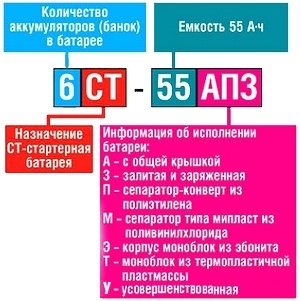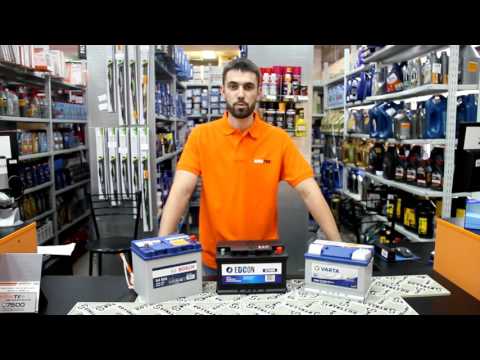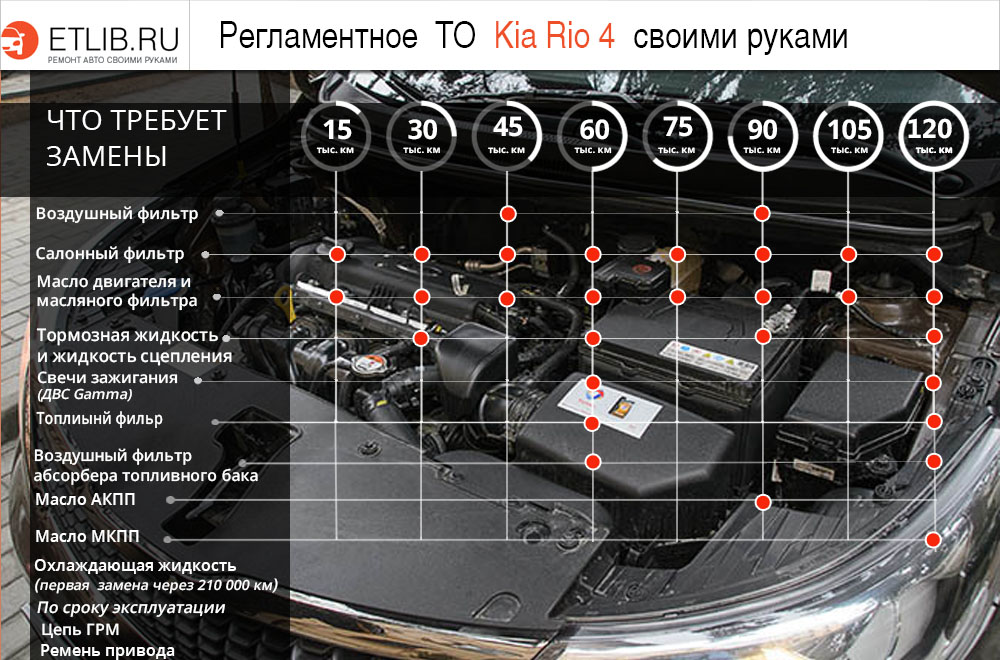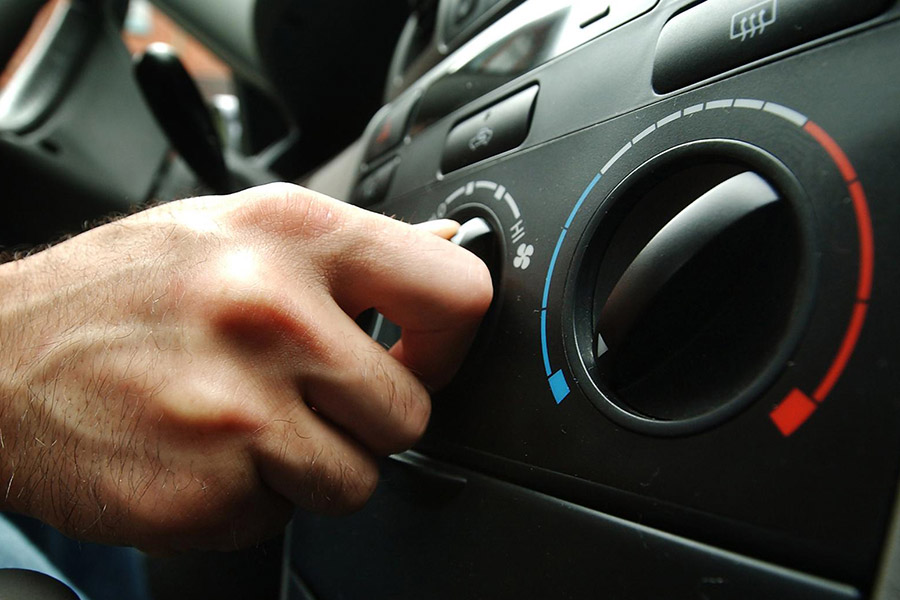
Vehicle battery marking
Content
Battery marking is of key importance in its selection. There are four basic standards, according to which information on technical characteristics is applied to the battery - Russian, European, American and Asian (Japanese / Korean). They differ both in the presentation system and in the description of individual values. Therefore, when deciphering the marking of the battery or the year of its release, you must first know in accordance with which standard the information is presented.
Differences in standards
Before moving on to the question of what the marking on the battery means, you need to know the following. On Russian batteries, "plus" is located on the left terminal, and "minus" on the right (if you look at the battery from the front, from the side of the sticker). On batteries manufactured in Europe and Asia (in most cases, but not always), the opposite is true. As for American standards, both options are found there, but more often European.
Polarity and standard of the car battery
In addition to marking batteries for cars, they also differ in terminal diameters. So, "plus" in European products has a diameter of 19,5 mm, and "minus" - 17,9 mm. Asian batteries have a "plus" with a diameter of 12,5 mm, and a "minus" - 11,1 mm. Terminal diameter difference made to eliminate errorsrelated to connecting batteries to the vehicle's on-board electrical network.
In addition to capacity, when choosing a battery, it is necessary take into account the maximum starting currentfor which it is designed. The labeling of a car battery does not always have a direct indication of such information, and in different standards it can be designated differently, each standard has its own nuances.
Russian Standard
Russian battery standard1 - Watch out for acid. 2 - Explosive. 3 - Keep away from children. 4 - Flammable. 5 - Protect your eyes.6 - Read the instructions. 7 - Sign of recycling. Recyclable. 8 — Certification body. 9 - Designation of features of utilization. Do not throw away. 10 — The EAC mark confirms that the products comply with the standards of the countries of the Customs Union. 11 - The material that is used in the cells in the manufacture of the battery. Important for the subsequent disposal of the battery. there may also be other additional icons that indicate the applied technology. 12 - 6 elements in the battery. 13 - The battery is a starter battery (for starting the car's internal combustion engine). 14 — Nominal battery capacity. In this case, it is 64 ampere-hours. 15 — The location of the positive terminal on the battery. Polarity. In this case "left". 16 — Rated capacity Ah. 17 - Discharge current at -18 ° C according to the European standard, it is also "cold start current". 18 - Weight of the battery. 19 – Technical conditions of production, compliance with standards. 20 — State standard and certification. 21 - Manufacturer's address. 22 — Bar code.
Designation on the domestic battery
Let's start the review with the most popular and widespread Russian standard in our country. It has the designation GOST 0959 - 2002. In accordance with it, the marking of machine batteries is divided into four parts, which can be conditionally divided into four digits. namely:
- The number of "cans" in the battery. Most passenger car batteries have the number 6 in this place, since that is how many cans of 2 Volts are in a standard battery (6 pieces of 2 V each give a total of 12 V).
- Battery type designation. The most common designation would be "CT", which means "starter".
- Battery capacity. It corresponds to the number in the third position. This can be a value from 55 to 80 Amp hours (hereinafter referred to as Ah) depending on the power of the car’s internal combustion engine (55 Ah corresponds to an engine with a volume of about 1 liter, and 80 Ah for a 3-liter and even more ).
- Execution of the accumulator and type of material of its case. In the last place, there is usually one or more letters, which are deciphered as follows.
| designation | Deciphering letters |
|---|---|
| А | The battery has a common cover for the entire body |
| З | The battery case is flooded and it is fully charged initially |
| Э | The case-monoblock battery is made of ebonite |
| Т | Monoblock case ABK is made of thermoplastic |
| М | Minplast type separators made of PVC are used in the body |
| П | The design used polyethylene separators-envelopes |
With regard to the aforementioned starting current, then in the Russian standard it is not indicated explicitly, on the given nameplate. However, information about it must be in the stickers next to the mentioned plate. For example, the inscription "270 A" or a similar value.
Correspondence table for the type of battery, its discharge current, minimum discharge duration, overall dimensions.
| Battery type | Starter discharge mode | Battery overall dimensions, mm | |||
|---|---|---|---|---|---|
| Discharge current strength, A | Minimum discharge duration, min | Length | Width | Height | |
| 6ST-55 | 255 | 2,5 | 262 | 174 | 226 |
| 6ST-55A | 255 | 2,5 | 242 | 175 | 210 |
| 6ST-60 | 180 | 3 | 283 | 182 | 237 |
| 6ST-66A | 300 | 2,5 | 278 | 175 | 210 |
| 6ST-75 | 225 | 3 | 358 | 177 | 240 |
| 6ST-77A | 350 | 2,5 | 340 | 175 | 210 |
| 6ST-90 | 270 | 3 | 421 | 186 | 240 |
| 6ST-110A | 470 | 2,5 | 332 | 215 | 230 |
European Standard
European battery standard1 - Manufacturer's brand. 2 - Short code. 3 — Rated voltage Volts. 4 — Rated capacity Ah. 5 — Current of cold scrolling according to the euro standard.6 - Battery model according to the manufacturer's internal code. Type according to ETN in which each group of numbers has its own explanation based on the encryption according to the European standard. The first digit 5 corresponds to the range up to 99 Ah; the next two 6 and 0 - exactly indicate the capacity rating of 60 Ah; the fourth digit is the polarity of the terminal (1-direct, 0-reverse, 3-left, 4-right); fifth and sixth other design features; the last three (054) - the cold start current in this case is 540A. 7 — Battery version number. 8 - Flammable. 9 - Take care of your eyes. 10 - Keep away from children. 11 - Watch out for acid. 12 - Read the instructions. 13 - Explosive. 14 - Battery series. Additionally, it can also be with the inscription: EFB, AGM or another, which indicates the production technology.
Battery labeling according to ETN
The European standard ETN (European Type Number) has the official name EN 60095 - 1. The code consists of nine digits, which are divided into four separate combination areas. namely:
- First digit. It conventionally means the capacity of the battery. Most often you can find the number 5, which corresponds to the range of 1 ... 99 Ah. The number 6 means the range from 100 to 199 Ah, and 7 means from 200 to 299 Ah.
- Second and third digits. They accurately indicate the value of the battery capacity, in Ah. For example, the number 55 will correspond to a capacity of 55 Ah.
- Fourth, fifth and sixth digits. Information about the design of the battery. The combination encodes information about the type of terminals, their size, type of gas outlet, the presence of a carrying handle, features of fasteners, design features, type of cover, and vibration resistance of the battery.
- Last three digits. They mean "cold scroll" current. However, in order to find out its value, the last two digits must be multiplied by ten (for example, if 043 is written as the last three digits on the battery marking, this means that 43 must be multiplied by 10, as a result of which we will obtain the desired starting current, which will be equal to 430 A).
In addition to the basic characteristics of the battery encrypted in numbers, some modern batteries place additional icons. Such visual pictures tell which cars this battery is suitable for, with which house. equipment, as well as certain nuances of operation. For example: illustrate the use for the start/stop system, urban mode, the use of a large number of electronic devices, etc.
BOSCH battery markings
There are also several designations that can be found on European batteries. Among them:
- CCA. It means marking the maximum allowable current when starting the internal combustion engine in winter conditions.
- BCI. The maximum allowable current in winter conditions has been measured according to the Battery Council International method.
- IEC. The maximum allowable current in winter conditions was measured according to the method of the International Electrotechnical Commission.
- DIN. The maximum allowable current in winter conditions was measured according to the Deutsche Industrie Normen method.
German standard
One of the varieties of European designations is the German standard, which has the name DIN. It can often be found as a marking for BOSCH batteries. It has 5 digits, which, according to information, are similar to the European standard indicated above.
It can be decoded like this:
- the first digit means the order of capacity (number 5 means that the battery has a capacity of up to 100 Ah, 6 - up to 200 Ah, 7 - more than 200 Ah);
- the second and third digits are the exact capacity of the battery, in Ah;
- the fourth and fifth mean that the battery belongs to a certain class, which corresponds to the type of fastener, dimensions, position of the terminals, and so on.
In case of using the DIN standard cold crank current is not explicitly specified, however, this information can be found somewhere near the indicated sticker or nameplate.
Batteries release date
Since all batteries age over time, information about the date of their release is always up to date. Batteries manufactured under the trademarks Berga, Bosch and Varta have a single designation in this respect, which is deciphered as follows. For a sample, in order to understand where the marking of the year of manufacture of the battery is, let's take this designation - С0С753032.

Location and decoding of the production date of Bosch, Warta, Edcon, Baren and Exid batteries
The first letter is the code of the factory where the battery was manufactured. The following options are possible:
- H - Hannover (Germany);
- C - Ceska Lipa (Czech Republic);
- E - Burgos (Spain);
- G — Guardamar (Spain);
- F - Rouen (France);
- S — Sargemin (France);
- Z - Zwickau (Germany).
In our specific example, it can be seen that the battery is made in the Czech Republic. The second character in the code means the conveyor number. The third is the order type. But the fourth, fifth and sixth characters are encrypted information about the release date of the battery. So, in our case, the number 7 means 2017 (respectively, 8 is 2018, 9 is 2019, and so on). As for the number 53, it means May. Other options for designating months:
Varta Production Date Explanation
- 17 - January;
- 18 - February;
- March 19;
- 20 - April;
- May 53;
- 54 - June;
- 55 - July;
- August 56;
- 57 - September;
- 58 - October;
- 59 - November;
- 60 - December.
Here are also a few transcripts of the release date of batteries of various brands:
Examples of BOSCH battery signatures
- A-mega, EnergyBox, FireBull, Plasma, Virbac. Example - 0491 62-0M7 126/17. The last number is 2017, and the three digits before the year are the day of the year. In this case, the 126th day is May 6th.
- Bost, Delkor, Medalist. Sample - 8C05BM. The first digit is the last digit in the year designation. In this case, 2018. The second letter is the Latin alphabet for the month. A is January, B is February, C is March, and so on. In this case March.
- Center. Sample - KJ7E30. The third digit is the last digit in the year designation. In this case, 2017. The fourth character is the letter designation of the months, similar to Bost batteries (A is January, B is February, C is March, and so on).
- Feon. The pattern is 2736. The second digit is the last digit of the year (in this case, 2017). The third and fourth digits are the week number of the year (in this case the 36th week, beginning of September).
- Fiamm. The sample is 721411. The first digit is the last digit of the year, in this case 2017. The second and third digits are the week of the year, week 21 is the end of May. The fourth digit is the number of the day of the week. Four is Thursday.
- ista. The sample is 2736 132041. The second digit is the year number, in this case 2017. The third and fourth digits are the week number, week 36 is the beginning of September.
- NordStar, Sznajder. Sample - 0555 3 3 205 8. in order to find out the year of manufacture of the battery, you need to subtract one from the last digit. This results in the number of the year. In this case, 2017. The penultimate three digits indicate the day of the year.
- Rocket. Sample - KS7J26. The first two letters are the cipher of the name of the company where the battery was produced. The third digit means the year, in this case 2017. The fourth letter is the code of the month in English letters (A is January, B is February, C is March, and so on). The last two digits are the day of the month. In this case, we have October 26, 2017.
- Startech. Batteries produced under this brand have two circles on the bottom, which clearly indicate the year and month of manufacture.
- Panasonic, Furukawa Battery (SuperNova). Manufacturers of these batteries directly write the date of manufacture on the cover of the product in the format HH.MM.YY. usually, the date is painted on the Panasonic, while the date is embossed on the Furukawa case.
- TITAN, TITAN ARCTIC. They are marked with seven numbers. The first six directly indicate the date of manufacture in the HHMMYY format. And the seventh digit means the number of the conveyor line.
Russian manufacturers usually have a simpler approach to designating the production date. They indicate it with four numbers. Two of them indicate the month of manufacture, the other two - the year. However, the problem is that some put the month first, while others put the year first. Therefore, in case of misunderstanding, it is better to ask the seller.
Designation according to SAE J537
American standard
Designated SAE J537. Consists of one letter and five numbers. They mean:
- Letter. A is a machine battery.
- First and second digits. They mean the number of the size group, and also, if there is an additional letter, the polarity. For example, the number 34 means belonging to the corresponding group. According to it, the battery size will be equal to 260 × 173 × 205 mm. If after the number 34 (in our example) there is no letter R, then it means that the polarity is direct, if it is, it is reversed (respectively, “plus” on the left and right).
- Last three digits. They directly indicate the value of the cold scroll current.
The interesting point is that in SAE and DIN standards, starting currents (cold scroll currents) differ significantly. In the first case, this value is greater. in order to convert one value to another you need:
- For batteries up to 90 Ah, SAE current = 1,7 × DIN current.
- For batteries with a capacity of 90 to 200 Ah, SAE current = 1,6 × DIN current.
The coefficients are chosen empirically, based on the practice of motorists. Below is a table of cold start current correspondence for batteries according to different standards.
| DIN 43559 (GOST 959-91) | EN 60095-1 (GOST 959-2002) | SAE J537 |
|---|---|---|
| 170 | 280 | 300 |
| 220 | 330 | 350 |
| 255 | 360 | 400 |
| 255 | 420 | 450 |
| 280 | 480 | 500 |
| 310 | 520 | 550 |
| 335 | 540 | 600 |
| 365 | 600 | 650 |
| 395 | 640 | 700 |
| 420 | 680 | 750 |
Asian standard
It is called JIS and is one of the most difficult because there is no general standard for labeling batteries "Asia". There may be several options at once (old or new type) for designating sizes, power and other characteristics. For an accurate translation of values from the Asian standard to the European one, you need to use special correspondence tables. you also need to remember that the capacity indicated on the Asian battery differs from that on the European batteries. For example, 55 Ah on a Japanese or Korean battery corresponds to only 45 Ah on a European one.
Deciphering the markings on the JIS standard car battery
In its simplest interpretation, the JIS D 5301 standard consists of six characters. They mean:
- first two digits - battery capacity multiplied by a correction factor (an operational indicator that characterizes the relationship between battery capacity and starter operation);
- third character - a letter that indicates the relationship of the battery to a certain class, which determines the shape of the battery, as well as its dimensions (see its description below);
- fourth and fifth character - a number corresponding to the basic size of the accumulator, usually its rounded length in [cm] is indicated as such;
- sixth character - the letters R or L, which indicate the location of the negative terminal on the battery.
As for the third letter in the designation, they mean the width and height of the accumulator. May sometimes display form factor or side face size. There are 8 groups in total (only the first four are used on passenger cars) - from A to H:
Asian standard machine battery marking using the Rocket battery as an example
- A - 125 × 160 mm;
- B - 129 × 203 mm;
- C - 135 × 207 mm;
- D - 173 × 204 mm;
- E - 175 × 213 mm;
- F - 182 × 213 mm;
- G - 222 × 213 mm;
- H - 278 × 220 mm.
The abbreviation SMF (Sealed Maintenance Free) in translation means that this battery is maintenance-free. That is, access to individual banks is closed, it is impossible to add water or electrolyte to them, and it is not necessary. Such a designation can stand both at the beginning and at the end of the base marking. In addition to SMF, there is also MF (Maintenance Free) - serviced and AGM (Absorbent Glass Mat) - maintenance-free, just like the first option, since there is an absorbed electrolyte, and not liquid, as it is in the classic version of lead-acid batteries.
Sometimes the code has an additional letter S at the end, which makes it clear that the battery current leads are thin "Asian" terminals or standard European ones.
The performance of rechargeable Japanese batteries can be as follows:
- N - open with unregulated water flow;
- L - open with low water flow;
- VL - open with very low water flow;
- VRLA - open with control valve.
Asian standard (old type) batteries1 - Manufacturing technology. 2 - The need for periodic maintenance. SMF (Sealed Maintenance Free) - completely unattended; MF (Maintenance Free) - serviced, need periodic topping up with distilled water. 3 - Marking of battery parameters (old type) in this case, it is an analogue of the 80D26L battery. 4 — Polarity (terminal location). 5 - Rated voltage. 6 — Cold start current (A). 7 - Starting current (A). 8 - Capacity (Ah). 9 - Battery charge indicator. 10 - Date of manufacture. The year and month are underlined with a small mark.
Below is a table of sizes, weights and starting currents of various Asian batteries.
| Accumulator battery | Capacity (Ah, 5h/20h) | Cold start current (-18) | Overall height, mm | Height, mm | Length, mm | Weight, kg |
|---|---|---|---|---|---|---|
| 50B24R | 36 / 45 | 390 | - | - | - | - |
| 55D23R | 48 / 60 | 356 | - | - | - | - |
| 65D23R | 52 / 65 | 420 | - | - | - | - |
| 75D26R(NS70) | 60 / 75 | 490/447 | - | - | - | - |
| 95D31R(N80) | 64 / 80 | 622 | - | - | - | - |
| 30A19R (L) | 24 / 30 | - | 178 | 162 | 197 | 9 |
| 38B20R (L) | 28 / 36 | 340 | 225 | 203 | 197 | 11,2 |
| 55B24R (L) | 36 / 46 | 410 | 223 | 200 | 234 | 13,7 |
| 55D23R (L) | 48 / 60 | 525 | 223 | 200 | 230 | 17,8 |
| 80D23R (L) | 60 / 75 | 600 | 223 | 200 | 230 | 18,5 |
| 80D26R (L) NX110-5 | 60 / 75 | 600 | 223 | 200 | 257 | 19,4 |
| 105D31R (L) | 72 / 90 | 675 | 223 | 202 | 302 | 24,1 |
| 120E41R (L) | 88 / 110 | 810 | 228 | 206 | 402 | 28,3 |
| 40B19 R (L) | 30 / 37 | 330 | - | - | - | - |
| 46B24 R (L) NS60 | 36 / 45 | 330 | - | - | - | - |
| 55B24 R (L) | 36 / 45 | 440 | - | - | - | - |
| 55D23R (L) | 48 / 60 | 360 | - | - | - | - |
| 75D23R (L) | 52 / 65 | 530 | - | - | - | - |
| 80D26R (L) | 55 / 68 | 590 | - | - | - | - |
| 95D31R (L) | 64 / 80 | 630 | - | - | - | - |
Results
Always select a battery exactly as specified by your vehicle manufacturer. This is especially true for the capacitance and inrush current values (especially in the “cold” one). As for brands, it is better to buy more expensive ones or batteries from the middle price range. This will ensure their long-term operation, even in difficult conditions. Unfortunately, many foreign standards, in accordance with which batteries are produced, are not translated into Russian, and moreover, they are offered on the Internet for a lot of money. However, in most cases, the above information will be enough for you to choose the right battery for your car.

